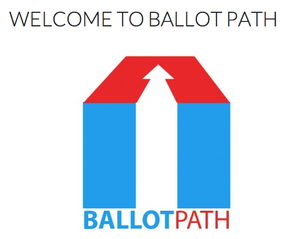OpenGov Voices: Ballot Path: who your representatives are & how you can run

Where do you go when you want to know something? That’s right, it’s a leading question and the answer is probably Google, but my point is: online. So, if online is where we’re looking, why don’t we put important public information there, like who our elected representatives are and how we can run for those positions?
You probably think you can pretty easily find this vital information for a functional democracy, right? Democracies need voters and candidates and there’s plenty of information online for people who want to vote. So, I’ll wait a few minutes while you go and see how you can run for your local school board position. Great, you’re back. Now, if you have a well-funded school district that puts extra time and money towards their webpage, maybe that was easy. But, if you’re like a lot of Americans, you may not have a district that is putting its resources there. School Boards, Utility Boards, Soil and Water Conservation Districts, all of these lower levels of public office are usually not funded to the point where they invest money in their websites to provide the information necessary for people to easily understand how to run.
What makes this lack of information especially damaging is that these lower levels of elected office are naturally where our politicians get their start. There are some professions/careers that will give people a natural advantage over the average citizen, like if you work for the government, or are a lobbyist, or have money to hire a political consultant, but if you don’t have that background it can be pretty hard to understand how to break into politics.

That’s where Ballot Path comes in. The Ballot Path website is about leveling the playing field so we all have the same, easily accessible knowledge about how to participate as candidates. The website provides a search engine where you enter your address, and it pulls up every office that you will be eligible to run for.
Ballot Path is non-partisan, straightforward in its purpose of candidacy filing information and has three steps:
- Users enter their address
- A list of every single elected office related to that address appears
- If a position is selected, a user sees a step-by-step guide of how they can run for that office, including: deadlines, pdfs of filing documents and layman’s terms descriptions of the process
From where I live in Springfield, Oregon, there are 24 different levels of government and that’s not including the levels within the political parties (like precinct representative). Our government has obviously grown in size with the population of this country, but we haven’t kept up with keeping it as intimate and accessible to the average citizen. If we demystify the candidacy process so that people can understand it and combine that with a tool allowing citizens to see all of the different levels of government, maybe we can get more people running for office who have different backgrounds from our usual politicians. And, by the way, have you ever noticed how consistent the backgrounds of our politicians are? Here’s how it goes: lawyers, governmental aides and private business people. That’s it. We do have a stray carpenter who makes it into Congress and every once in a while a teacher may make their way in, but those are the exceptions and not the rules.
To kickstart Ballot Path, I attended a Google Startup Weekend event in Portland, Oregon and was lucky enough to assemble a small team to work with me on the project. We didn’t win any of the awards at the end, but we did make some great contacts in Portland’s tech and government community and we were introduced to people at Portland State University. We ended up with a main adviser and wonderful friend from PSU’s Hatfield School of Government and we pitched Ballot Path to computer PSU science students who decided to work on Ballot Path for their senior year Capstone Project. Suddenly, there were great sources of help on the technical side of creating Ballot Path, as well as having someone with excellent political knowledge of Oregon’s governments.
A few months ago, we applied for the OpenGov grant from The Sunlight Foundation and were fortunate enough to receive $10,000 to help Ballot Path. Since we already had help on the technical side, we decided to use the grant money to pay interns from around Oregon to gather the elections/candidacy analysis and essentially give us the step-by-step breakdown of how to run for office for every one of Oregon’s elected positions.
The Ballot Path website is set to launch on August 25th, 2014. We’re excited to show our fellow Oregonians what we’ve done for their state and although it is too late for people to file for candidacy for the positions this November, our site will be able to have an impact on all elections throughout Oregon in 2015 and beyond. We’ve also connected with political science departments from universities around the country and are working on partnerships that would allow political science or public policy students from those schools to work on Ballot Path for their own states. By 2016, we hope to have every state in America covered.
The definition of insanity is commonly said to be doing the same thing repetitively and expecting different results. How long have we been voting for candidates who rise up through the traditional system of the major parties and been disappointed with the direction of our country? Personally, I’m tired of those results and I’m tired of having such a passive role in our political destiny and that’s what drove me to create Ballot Path. Imagine that: everyday citizens taking part in their government by running for office. That’s democracy. That’s Ballot Path.
Jim Cupples is the founder of Ballot Path, based out of Oregon. Jim is looking to connect with other people/groups/institutions that are interested in making candidacy information more accessible. Feel free to email Jim with any comments or questions about Ballot Path at jim@ballotpath.org
Interested in writing a guest blog for Sunlight? Email us at guestblog@sunlightfoundation.com.

